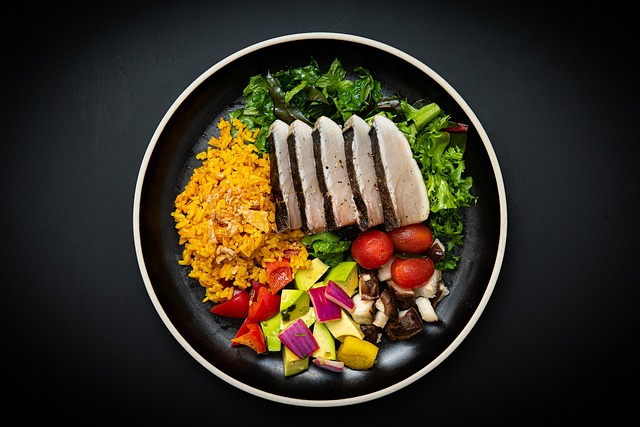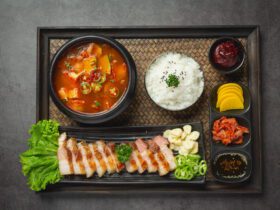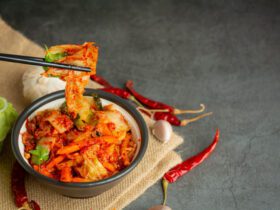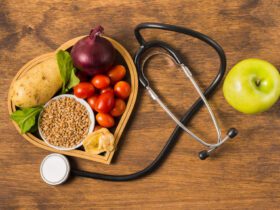It might be difficult to discover a satisfying and sustainable eating strategy in a world when trending diets and fast solutions are commonplace. The Rice Diet is one dietary alternative that has attracted attention as a result of our constant exploration of new dietary options as part of our search for a healthy lifestyle. The Rice Diet was created in the 1930s by Dr. Walter Kempner. It has stood the test of time and continues to enthrall those looking for a healthy lifestyle.

What Is Rice Diet
This Diet is a well-known, low-calorie, low-sodium diet that has been used primarily for weight loss. The diet’s original purpose was to treat hypertension and kidney disease, but it gained popularity as a weight-loss method. The main components of the traditional rice diet are rice, fruits, vegetables, and a small quantity of protein. This diet is extremely low in sodium, protein, and fat. The daily calorie intake is limited to between 800 and 1,200 calories, which is much less than the typical amount of calories suggested.
The diet has a focus on real, whole foods and discourages the intake of fats, animal products, added sweets, and processed foods. It promotes the eating of lean proteins including fish and poultry as well as entire grains, fruits, vegetables, legumes, and certain lean proteins. Additionally, the diet often has little salt, which can help lower blood pressure and lessen fluid retention.
It’s important to note that before considering any diet or significant changes to your eating habits, it is advisable to consult with a healthcare professional or registered dietitian who can assess your specific situation, and health goals, and provide personalized recommendations.
In simple terms, the success of the rice diet may be caused by meals that are low in calories, low in salt, and high in fiber. Let’s look at the things you should eat and stay away from now.
Who Ought to Follow a Rice Diet?
A low-calorie diet that can help people lose weight is the rice diet. Additionally, it helps support a healthy weight. Diabetes, high blood pressure, and high cholesterol can also benefit from it. Because the rice diet is low in fat, salt, and sugar, it is beneficial for those who have high blood pressure, high cholesterol, and diabetes.
Those seeking an overall diet that addresses several aspects of their lifestyle are also drawn to the rice diet. Although adopting new lifestyle habits makes this diet more difficult to stick to, it also enhances the likelihood of long-term weight loss.

If you are following a rice bodybuilding diet lifting weights is not recommended. Protein and good fats are insufficient in the diet to promote strength and muscular building.
It is possible that small children, expectant mothers, and nursing moms should not follow a rice diet. In the end, people who are prepared to stick to a rigorous diet and who need to reduce weight can benefit from the rice diet.
How Does It Work?
The way the rice diet works is by consuming less fat and salt. Your body absorbs water when exposed to sodium, which results in weight gain and bloating. Cut back on the salt in your diet, and your body will lose this excess water weight. Foods low in fat are also necessary for this diet. Consuming excessive amounts of fat can raise dangerous cholesterol levels, which raises the risk of heart disease and stroke.
The digestive tract and kidneys are the main focuses of the rice diet. Lowering the quantity of animal protein, dairy, and salt in your diet will help your kidneys and digestive system mend and recover on their own.
The first week of the diet will bring about some noticeable changes. You will lose weight in the second and third weeks. In general, the rice diet lowers your risk of hypertension and other chronic illnesses, enhances renal function, and is a safe and long-term weight loss strategy.

What Should eat for Rice Diet?
In this Diet, the main focus is on consuming low-calorie, low-sodium, and nutrient-dense foods. Here are some recommended food choices for the Rice Diet:
- Rice: Because they are more nutrient-dense and contain more fiber than white rice, people usually prefer brown rice, whole grain rice, or wild rice.
- Fruits: Include a variety of fresh fruits such as apples, berries, oranges, grapefruits, melons, and pears. These provide natural sweetness and are rich in vitamins, minerals, and fiber.
- Vegetables: Opt for non-starchy vegetables like leafy greens (spinach, kale, lettuce), broccoli, cauliflower, bell peppers, carrots, cucumbers, and tomatoes. These are low in calories and packed with essential nutrients.
- Legumes: Include legumes like lentils, beans, and chickpeas for a good source of plant-based protein, fiber, and other nutrients.
- Lean proteins: If allowed on your specific Rice Diet plan, choose lean sources of protein such as skinless poultry, fish, tofu, tempeh, or egg whites. These provide essential amino acids without excessive fat content.
- Low-fat dairy: If you permit dairy, choose non-fat or low-fat cheese, yogurt, and milk. If you desire, you can use non-dairy substitutes such as soy or almond milk.
- Healthy fats: While the Rice Diet is generally low in fats, incorporating small amounts of healthy fats can be beneficial. Choose sources like avocados, nuts, seeds, and olive oil.
Does rice help people lose weight?
Additionally, rice expands to three times its original volume, making it a very substantial food. When combined with a nutritious diet, this can help one eat less overall, which is a tactic some utilize to promote weight management. However, including rice in a diet necessitates considering serving sizes since, according to the U.S. Department of Agriculture, one cup of white rice has more than 200 calories. People can get in trouble with consuming rice during weight loss phases as the servings can add up quickly.
What should be avoided in the Rice Diet?
There are a number of foods and components that should generally be avoided or consumed in moderation when following the rice diet. Here are some things to stay away from:
- High-fat foods: Avoid foods that are high in saturated and trans fats. This includes fatty cuts of meat, full-fat dairy products, fried foods, processed snacks, and desserts high in added fats.
- Processed foods: Stay away from processed and packaged foods, as they tend to be high in sodium, unhealthy fats, and added sugars. These include items like pre-packaged meals, canned soups, chips, cookies, and sugary cereals.
- Alcohol: Alcohol provides empty calories and can hinder weight loss efforts. It is generally recommended to avoid or limit alcohol consumption while on the Rice Diet.
- Refined grains: Refrain from consuming refined grains like white bread, white pasta, and pastries. Instead, focus on whole grains such as brown rice, whole grain bread, and whole wheat pasta.
- High-calorie beverages: Avoid sugary drinks, including soda, sweetened tea, energy drinks, and fruit juices. These beverages can contribute to excessive calorie intake without providing substantial nutrients.

Advantages of a Rice diet
- Weight loss: The Rice Diet is a low-calorie diet that can lead to weight loss due to the restricted calorie intake. By focusing on whole, unprocessed foods and limiting high-fat and high-sugar options, individuals may achieve a calorie deficit, resulting in weight loss.
- Reduced sodium intake: The Rice Diet promotes a low-sodium approach, which can be beneficial for individuals with high blood pressure or fluid retention. Limiting sodium-rich foods may help lower blood pressure and reduce water retention.
- Increased intake of whole foods: The Rice Diet emphasizes the consumption of whole grains, fruits, vegetables, and legumes. These nutrient-dense foods provide essential vitamins, minerals, fiber, and antioxidants that support overall health and well-being.
- Potential health benefits: The diet’s focus on plant-based foods, lean proteins, and healthy fats can have positive effects on various health markers. It may help improve blood lipid levels, reduce inflammation, and lower the risk of chronic diseases.
- Structured approach: The Rice Diet provides a structured plan with clear guidelines, making it easier for individuals to follow.
Side Effects Of The Rice Diet
- Nutrient deficiencies
- Sustainability and Variety
- Social limitations
- Potential health risk
- Lack of individualization

The Rice Diet offers a methodical strategy for weight loss and may have health advantages. However, it’s important to approach the diet cautiously and seek advice from medical experts. Keep in mind that everyone’s journey is different, and what works for one person may not work for another. Finding an eating pattern that meets your unique needs, tastes, and goals is, in the end, the key to a sustained and balanced approach to health.







1 Comment